I was happy to collaborate with a Finnish gut microbiome testing company called Gut Guide.
It was supposed to be a simple review about gut microbiome testing. However, the results from my microbiome were alarming. I had previously done a Gut guide analysis in 2018, so there was a reference point.
Interestingly, I did gut microbiome testing 10 days after testing positive for COVID-19. That might have affected the result.
This is deep dive into the importance of gut health, gut microbiome testing, and my plan to find a healthy balance in my gut microbiome.
Table of Contents
1. Gut health - Why does it matter?
Numbers reveal how massive the microbiome is for humans, and it’s a good way to start when we are thinking about its effect on human health.
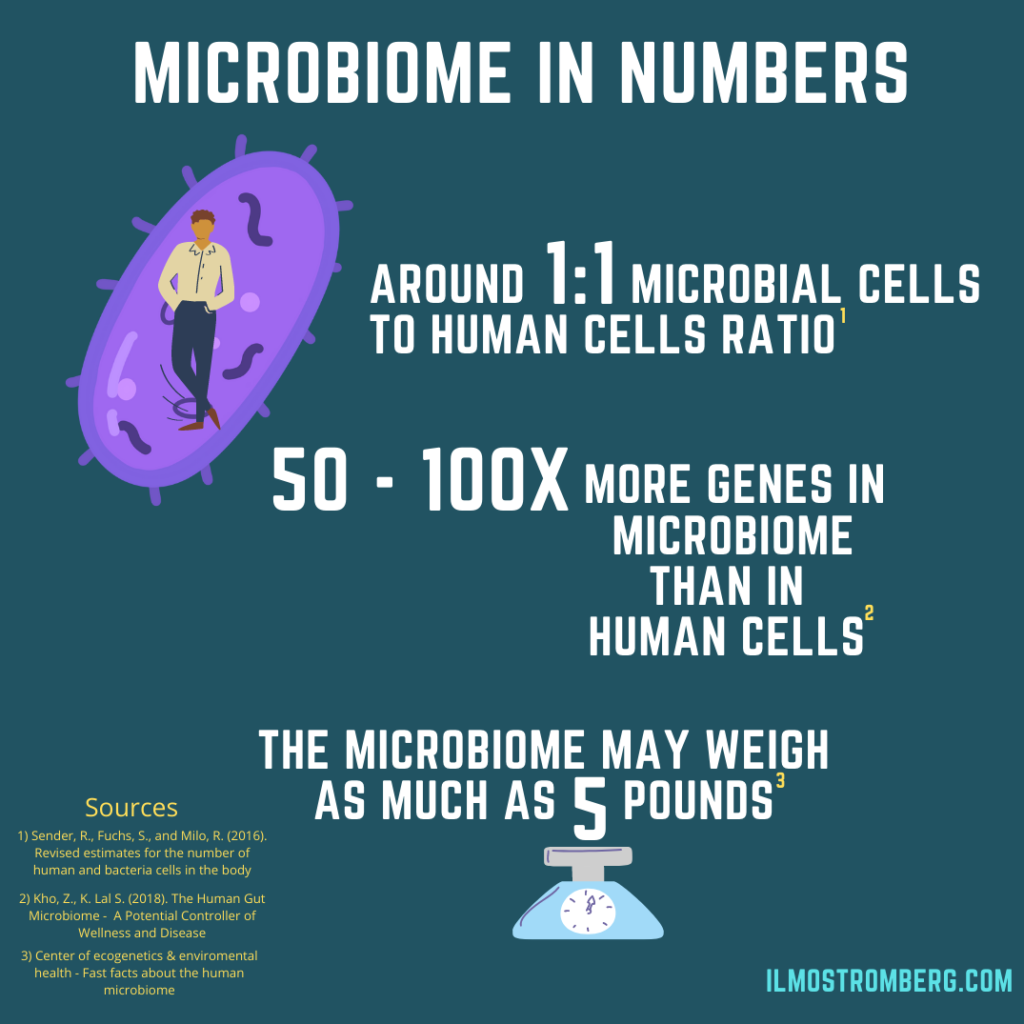
The microbiome can be defined as a “microbial community occupying a reasonable well-defined habitat which has distinct physicochemical properties” [1]. Most of the microbial bacteria are residents of the human gut. [2].
On a larger scale, we humans can be seen as the microbiome of planet earth. If we can influence the state of the earth, it’s safe to assume that gut bacteria can do the same for us.
This wasn’t a clear case 20 years ago, but now science has put a bright spotlight on the microbiome:
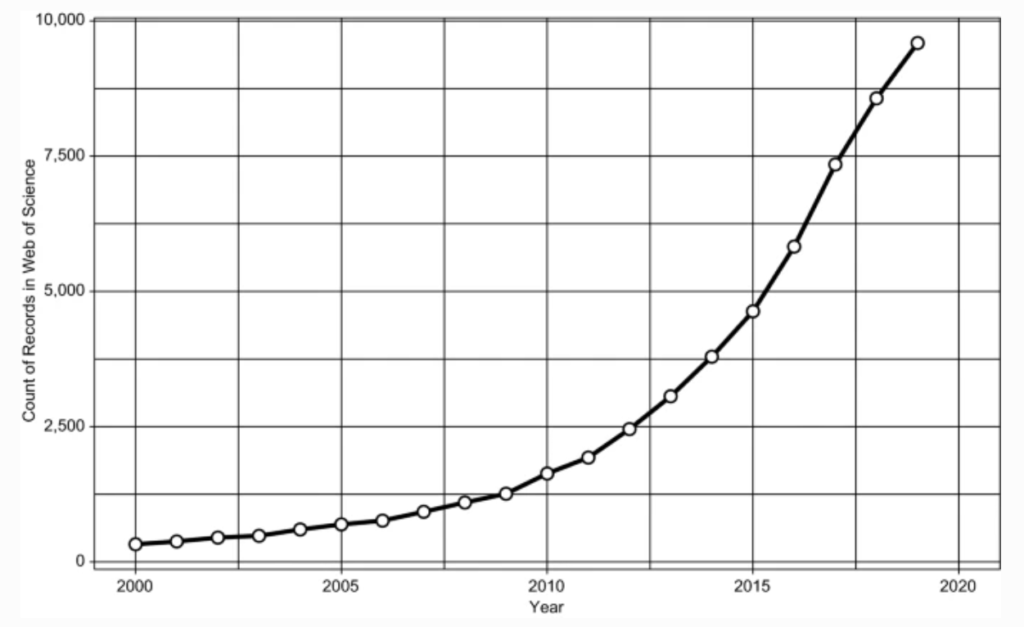
One of the key drivers for this change was establishing a mechanism for the gut-brain axis at the end of the 20th century. One of the hallmark studies found anxiety-related behavior in mice when given a specific type of bacteria. The bacteria didn’t cause an immune response which indicated a connection between the gut and brain. [3]
Next, I want to highlight some of the key studies on gut health:
Immune System
The microbiome plays a fundamental role in the immune system – problems in the microbiome can also be problematic for the immune system [4]
There are byproducts called short-chain fatty acids (SCFA) when gut bacteria eat fiber. SCFA’s promotes the expansion of T-regulatory cells. [5] T-regulatory cells play an essential role in the outcome of COVID-19; having a low baseline increases the risk of severe disease. [6]
Dysbiosis (imbalance) of the gut microbiome is linked to autoimmune diseases [7].
Disorders
Gut bacterias produce serotonin and GABA, and in patients with depression, there have been seen unusual differences in bacteria strains [8]
Many studies have shown children with autism spectrum disorder have dysbiosis of the gut microbiome [9][10][11]
Similarly, patients with schizophrenia had a different microbiome compared to healthy controls [12]
Five studies have illustrated dysbiosis with Bipolar disorder [13]
Lastly, anxiety disorder and dysbiosis were also linked [14] [15]
Common diseases in late adulthood
Patients with Parkinson’s disease had dysbiosis [16] [17]
Type 2 diabetes subjects had lower levels of butyrate-producing bacteria, and similar findings also in heart disease patients [18] [19]
Patients with Alzheimer’s disease had an imbalance in the gut microbiome [20]
Dysbiosis can indirectly influence cancer growth [21]
A healthy microbiome can protect against common diseases in late adulthood [22]
Environmental factors
Antibiotics can cause dysbiosis [23]
High consumption of ultra-processed food is detrimental to gut health [24]
Air pollution can alter the gut microbiome harmful way [25]
Cesarean section may cause dysbiosis in newborn babies [26]
Breastfeeding is a potential strategy for allergy prevention by microbiota shaping [27]
Conclusion
I already knew about the gut-brain axis and the importance of gut health but what surprised me was that basically every mental disorder or disease was associated with dysbiosis.
Similarly, low heart rate variability (HRV) is associated with these health problems, but in the case of HRV, it’s more a symptom of these diseases or disorders. However, dysbiosis might be one of the driving forces behind these illnesses.
2. Assessment of my gut health based on the lifestyle and environmental factors (before the gut microbiome test)
Before looking at the Gut Guide results, I will assess my gut health.
The following timeline illustrates factors that may have impacted my gut health negatively or positively:
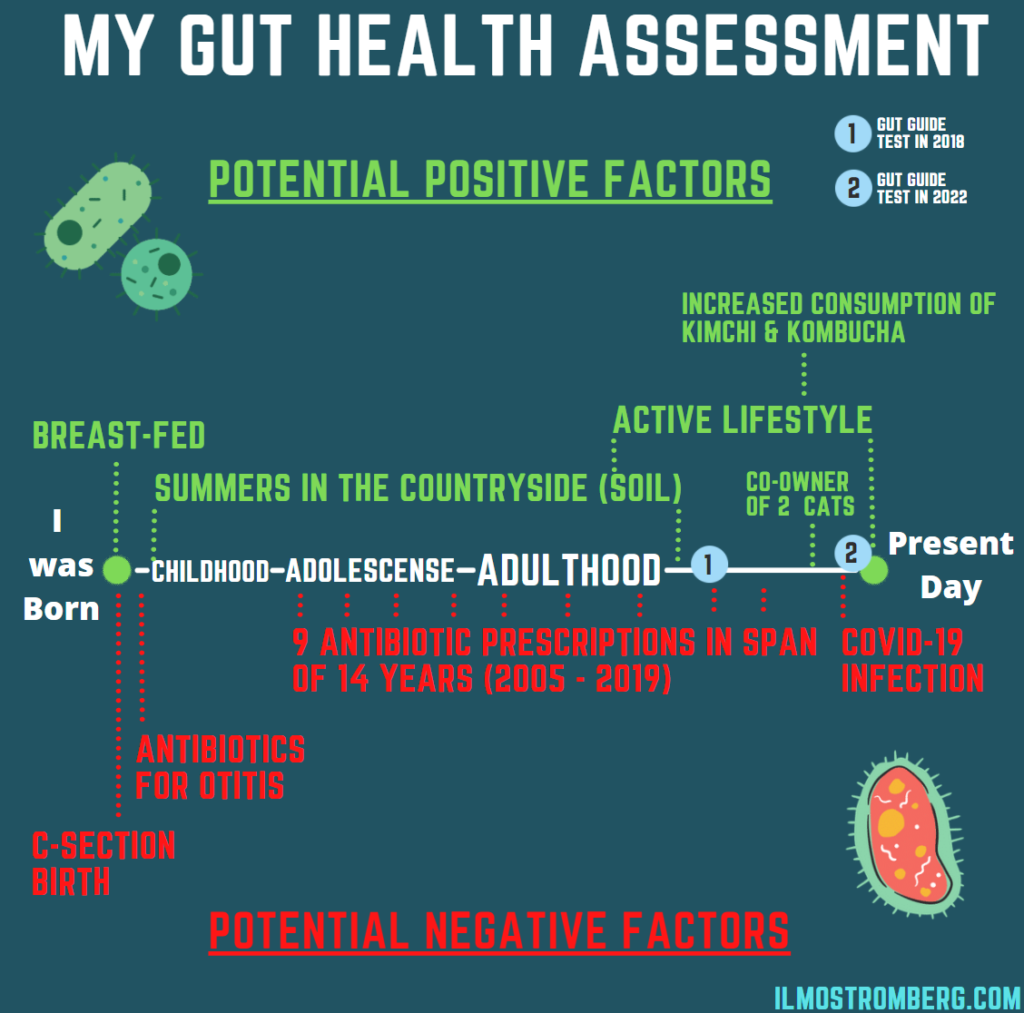
Potential positive factors
Breastfeeding has short and long-term benefits according to a meta-analysis published in Nature [28].
I spent my childhood and adolescence in the countryside every summer which involved direct contact with the soil. That might have beneficial effects on the microbiome [29].
I started exercising with passion over 10 years ago, and that most likely had a positive effect on my gut health [30].
There aren’t many studies on cat owners’ gut microbiome, but one study from 2021 concluded few potential benefits. First, it seemed that cat owners had increased the synthesis of B vitamins, amino acids, and improved carbohydrate metabolism. The second finding highlighted increased pathways related to SCFAs which means enhanced anti-inflammatory effects [31].
Similarly, I would like to see more studies on (potential) benefits of Kimchi, kombucha, etc. One study worth mentioning saw improvements in 10 weeks fermented food consumption on inflammatory markers [32].

Potential negative factors
Antibiotic use is the main theme in the negative factor part. When I was children, I had multiple otitis (ear infections) taken care of with antibiotics. Antibiotic use was most frequent from 2005 to 2019 due to bad flu cases, which many times led to bronchitis. Additionally, there was acne that was fought against with antibiotics.
Now looking retrospectively, antibiotic consumption was excess, and not all cases were relevant. The same trend is seen worldwide; one study concluded that 30% of antibiotic prescriptions were unnecessary [33].
Can I see any health problems that I could pinpoint to antibiotic use or C-section birth?
I cannot say that I suffer any recurring stomach problems, although my stomach is sensitive to stress. In the early part of my life, I had many allergies that might have been caused by C-section birth or early life usage of antibiotics.
COVID-19 wasn’t supposed to be part of this assessment picture, but I had to include it after receiving the results in 2022. I will open this more in the next part.
Conclusion
There are positive and negative factors that have impacted my gut health. Based on my timeline, I expected to have the worst gut guide results in 2018 as it was a period of heavy antibiotic use. In 2020-2022 I corporated more gut-friendly foods (kimchi & Kombucha) into my diet, and I’m also a happy owner of two lovely cats.
3. Gut Guide review and the results
Gut Guide is a Finnish company offering gut microbiome analysis (taking from a stool sample). I did my first gut microbiome analysis in 2018, so it was interesting to do it again in 2022 and compare the result. Both times I had the product GutIndex® TOTAL
Quick summary of Gut index® TOTAL
Product: | Gut Index® TOTAL |
Brand: | Gut Guide |
Founding year: | 2011 |
Website: | |
Best for: | If you are suffering gut problems, have weak immunity, mood, or sleep problems, gaining weight rapidly, or just want to optimize your overall health |
Price: | 149 euros per analysis (164 dollars) |
Gut Index Total scope: | 8 most relevant bacteria species to the gut (compared to the average for healthy Finns) + yeast test |
Waiting time: | 2 weeks from stool sample arriving to the laboratory |
The stool sample is collected in-home and sent to the laboratory (included in the 149 euros)

Collecting stool samples is straightforward and easy, although it’s good to have steady hands when picking a small scoop of you know what.
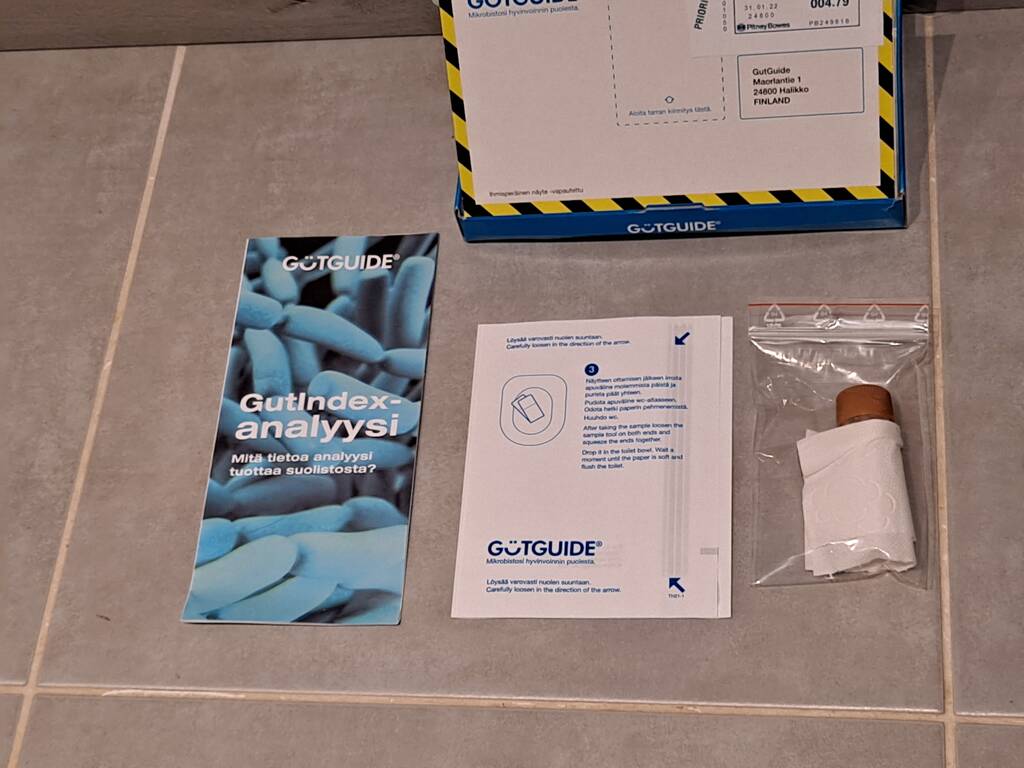
Gut guide results
The analysis gives a total score called gut index based on those eight bacteria species and their ratio on the sample.
(I have edited the look of the report so we can compare the 2018 and 2022 results, and I also have translated it into English)

I was really surprised by the 2022 result, as in my assessment antibiotic use was frequent in 2018 and it stopped in 2019. Also, my diet was better from 2020 onwards.
If COVID-19 can make changes in brain structure [34], it’s not out of the box to hypothesize that it can mess up the gut microbiome. Before looking at this more, let’s look at the actual values for each 8 bacteria species to understand the overall gut index result
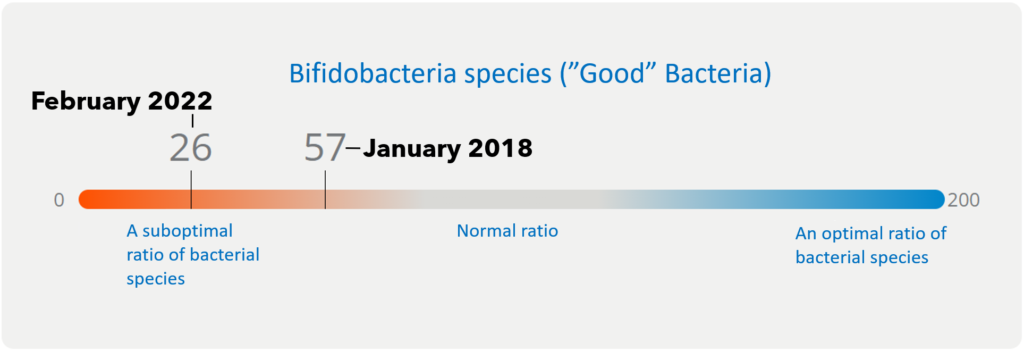
I already had a poor result in 2018, but now it’s alarming. It is true that Bifidobacteria levels decrease as we age [35], but in 4 years, there shouldn’t be such a drastic change.
Most likely, the overuse of antibiotics had impacted bifidobacteria levels in my stomach in 2018, and in 2022 COVID brought it even lower.
Why do I find it alarming? There is a clear trend between lower levels of bifidobacteria and various common disease states [36]. Currently, we cannot show a casual relationship with these, but I take it seriously as my goal is live over 100 years old.
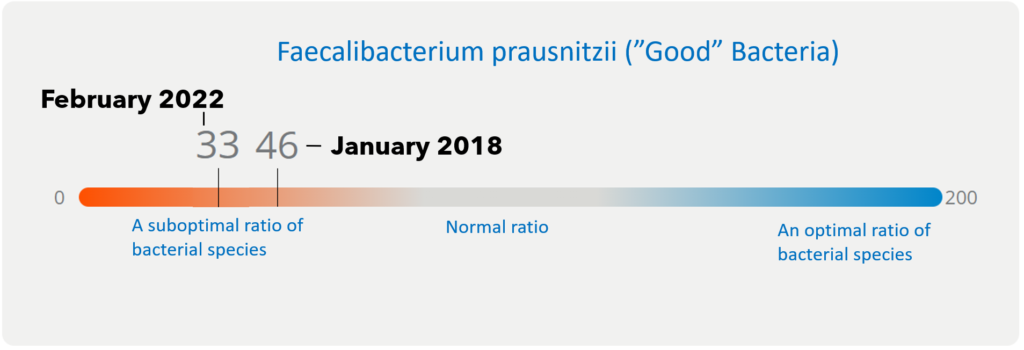
Similar trend on faecalibacterium, although the drop was smaller.
Faecalibacterium is one of the key butyrate producers in the gut. Butyrate itself has a vital role in gut health and host well-being [37].
A brand new study even suggests that butyrate can enter the portal vein and interact with various organs. The key implication of the study is that butyrate might have a cardiovascular protective effect. [38]
Again, definitely, something that I want to focus on and improve!

Best result out of three “good” bacterias but still far away from the normal ratio.
Studies indicate that lactobacillus may reduce unwanted cholesterol [39], and one study even concluded a 6-10% risk reduction in coronary heart disease when consuming fermented yogurt containing the Lactobacillus L1 strain [40].
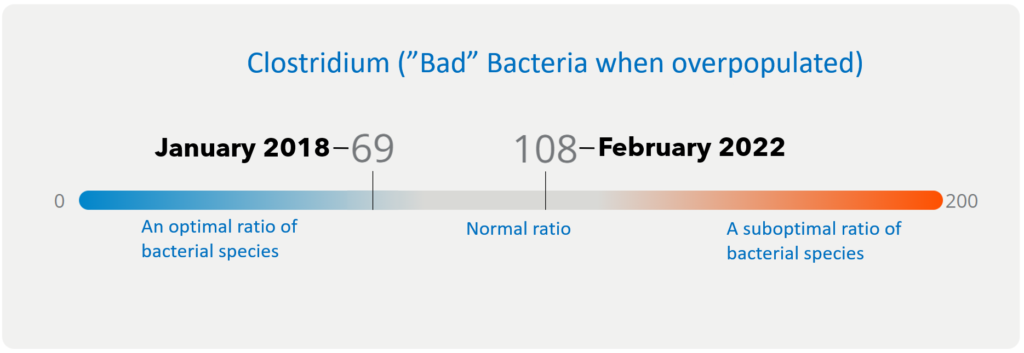
In clostridium, there was a significant increase in 2022, but still excellent result considering the overall theme of the results.
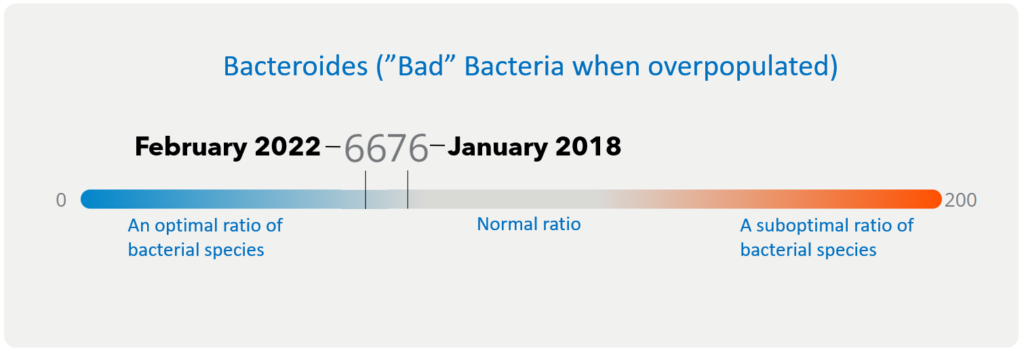
Bacteroides’ results showed a slight improvement in 2022, which I take happily.
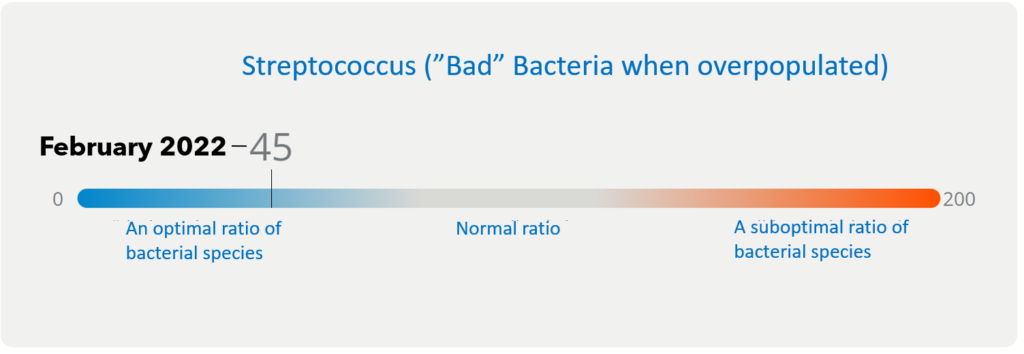
Streptococcus species was not present in the 2018 analysis, so we don’t have a reference point here. My results with Clostridium, Bacteroides, and Streptococcus (needed bacterias but overgrowth is not wanted) stand out against the good bacterias.
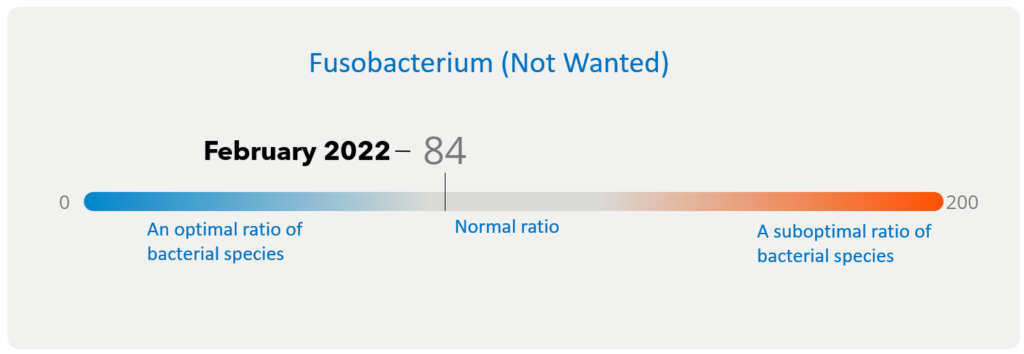
Similarly, the Fusobacterium result was only available in 2022. Again, a good result that does not require action points.
Fusobacterium can cause oral infections and gut problems [41].
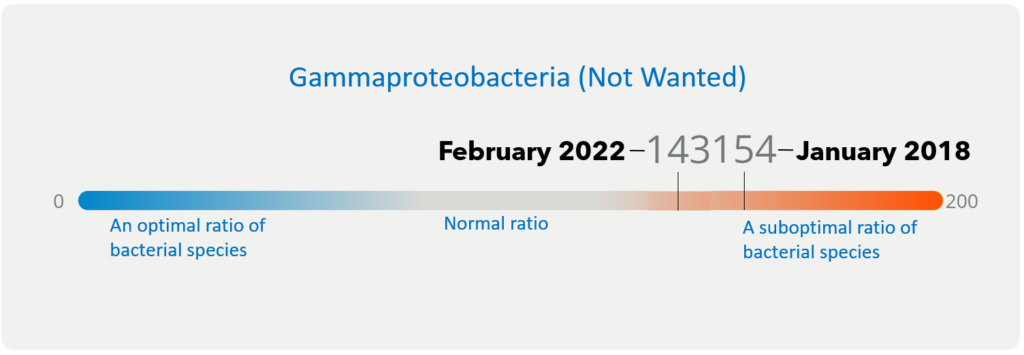
Gammaproteobacteria requires a little bit of deep dive. The result was poor both in 2018 and 2022, even though there was a slight improvement in 2022.
The gut guide report explains that Gammaproteobacteria analysis looks at strains like Echerichia, Serratia, Yersinia, Shigella, and Salmonella.
The abundance of Gammaproteobacteria can be harmful to the liver, increasing the risk for non-alcoholic fatty liver disease or liver damage due to endogenous alcohol production [42][43]. I’m not worried about this as I’m not in the risk group for non-alcoholic fatty liver disease, and my liver blood markers have been at an optimal level.
What peaks my interest is Parkinson’s Disease patients whose stool samples reveal an abundance of Gammaproteobacteria [44]
Gammaproteobacteria is the true enemy of the host, as it not only benefits from the effects of inflammation; they also have properties that directly enhance the inflammatory response. [45]
There’s evidence that influenza (and probably COVID-19 also) can alter the lung microbiome, driving it towards Gammaproteobacteria dominated [46]. Based on this, I hypothesize that a similar effect could be seen in the gut microbiome.
My COVID-19 result could explain the high number in February 2022, but I have no explanation for the 2018 result. I will probably take the third test after completing the “fix my gut microbiome protocol.”
4. Strategy to improve my gut microbiome
If COVID-19 impacted my gut health, it took out some good bacteria. In a sense, I hope this is the case because otherwise, I don’t have an explanation for the decreased scores.
Nevertheless, the focus areas are clear:

I need to improve the level of good bacteria in my stomach and get rid of gammaproteobacteria.
The challenge is to understand how to do that. Luckily Gut Guide also offers recommendations based on the results.
Gut Guide recommendations
1. Ensure getting 25 – 30 grams of fiber each day (Fiber is fuel for the good bacteria)
2. All the fermented products are good for the gut
3. Try supplements with bifidobacteria, lactobacillus, and soluble fiber to support gut health
Gut Guide also has its own products, and they are willing to send free samples to paid customers
Turning strategy into results
I will use the following strategy to improve my gut health:
1. Increase kimchi consumption (happy to do this as I have lived in South Korea as an exchange student). Following studies supports kimchi consumption [47] [48] [49] . Eating kimchi seems to increase lactobacillus.
2. Increase the consumption of plain greek yogurt that contains probiotics. It should increase the levels of lactobacillus; however, in Bifidobacteria, there might not be a change [50]. Other studies also support the hypothesis that yogurts will increase bifidobacteria in the gut [51] [52]
3. Increase the consumption of polyphenols called anthocyanins. Six studies (three in vitro, two animal, and one human trial) showed a significant increase in the Bifidobacterium population induced by anthocyanins. [53]
Even though more studies are needed, there’s no downside to increasing anthocyanins in the diet as good sources are blueberries, raspberries, and blackberries [54]
4. For Faecalibacterium, I will try kiwifruit. One study showed kiwifruit-derived supplements increased Bifido- and Faecalibacterium [55]. I will not take the supplement route. I would rather consume the actual fruit (there are other health benefits with Kiwifruit regardless).
5. I will ramp up my dietary fiber intake up to 40g per day. It will be a little bit over the recommendations, and most likely, it will bring more benefits than negatives. One interesting video about that from Dr. Michael Lustgarten. [56]
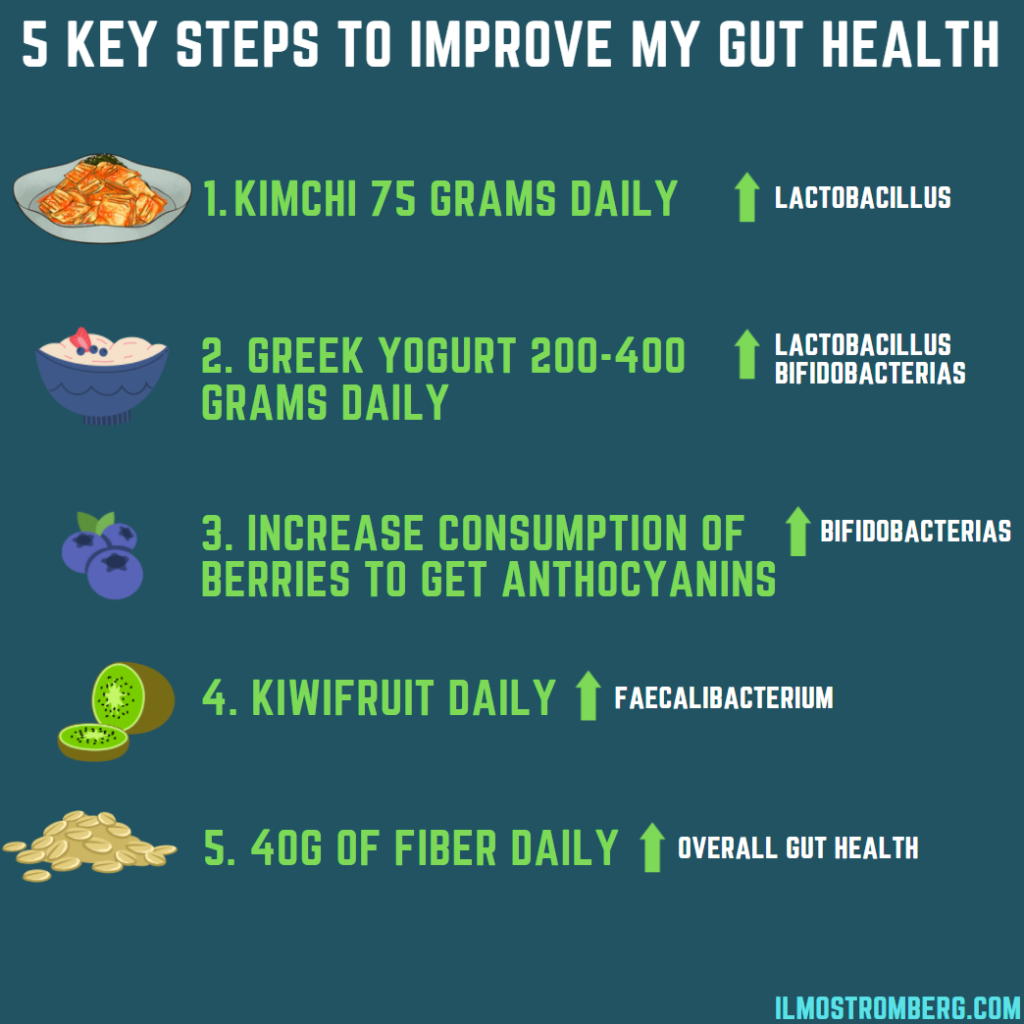
If you, my dear reader, have suggestions to improve my gut health, I’m all ears. Please comment on the blog post or send an email!
I will do a new gut analysis in 6 months and report the results.
Thank you for reading!


This Post Has 2 Comments
Hi, Ilmo
Great article as usual.
I would suggest thinking about legumes ( beans, peas, and soybeans) as a source of fibre. Butyrate is a major short-chain fatty acid produced during gut flora-mediated fermentation of dietary fibres. Also, Butyrate has a role as an anti-inflammatory agent, primarily via inhibition of nuclear factor κB (NF-κB) activation in human colonic epithelial cells[47], which may result from the inhibition of HDAC.
Thank you Maryna and sorry for the late reply.
Good suggestion, I’m not consuming that much legumes currently so there’s room for that. It’s now Summer here in Finland and soon we will get local fresh peas